-
CATEGORY ::
- All Seeds /
- All Flower Seeds /
- All Chrysanthemum Seeds
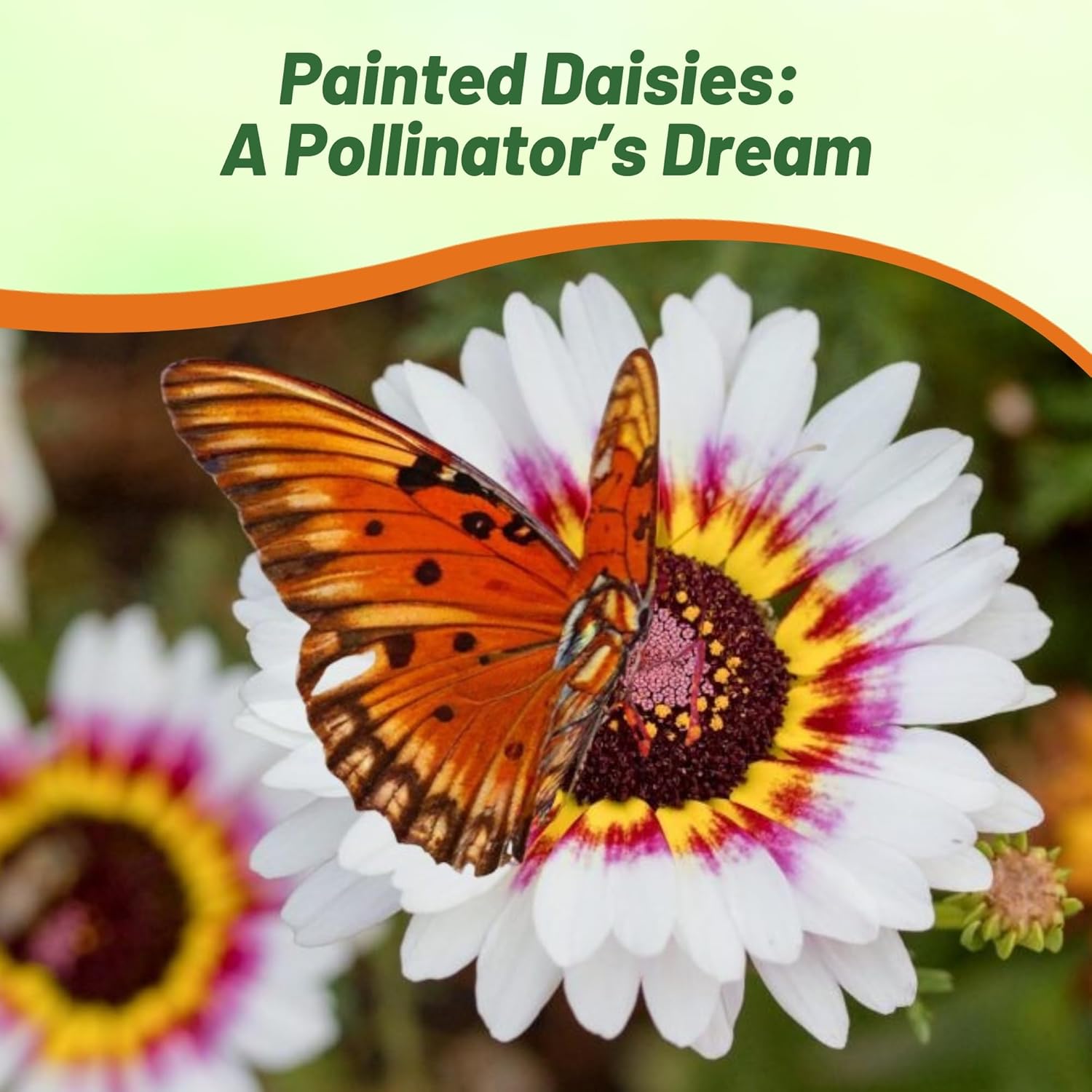

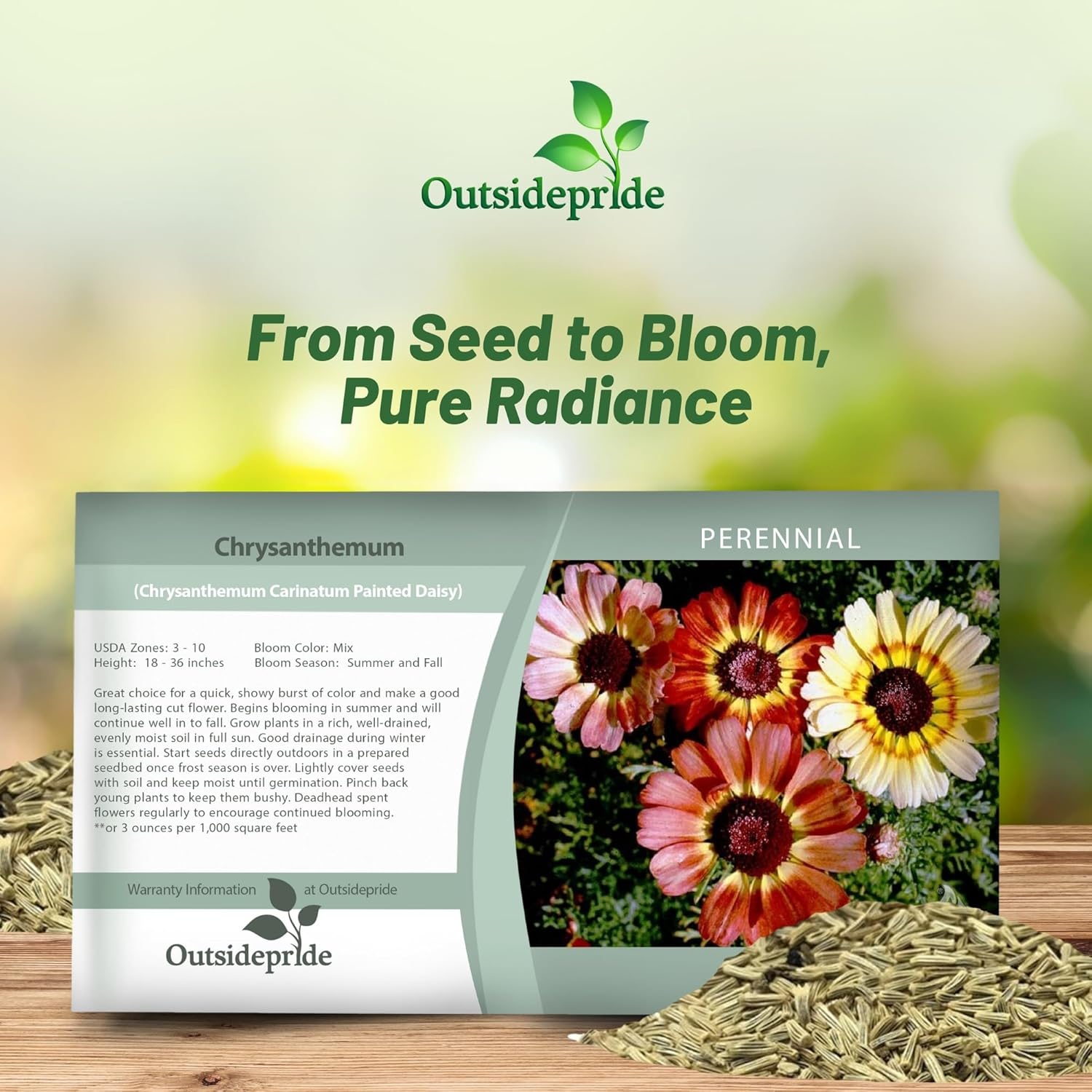
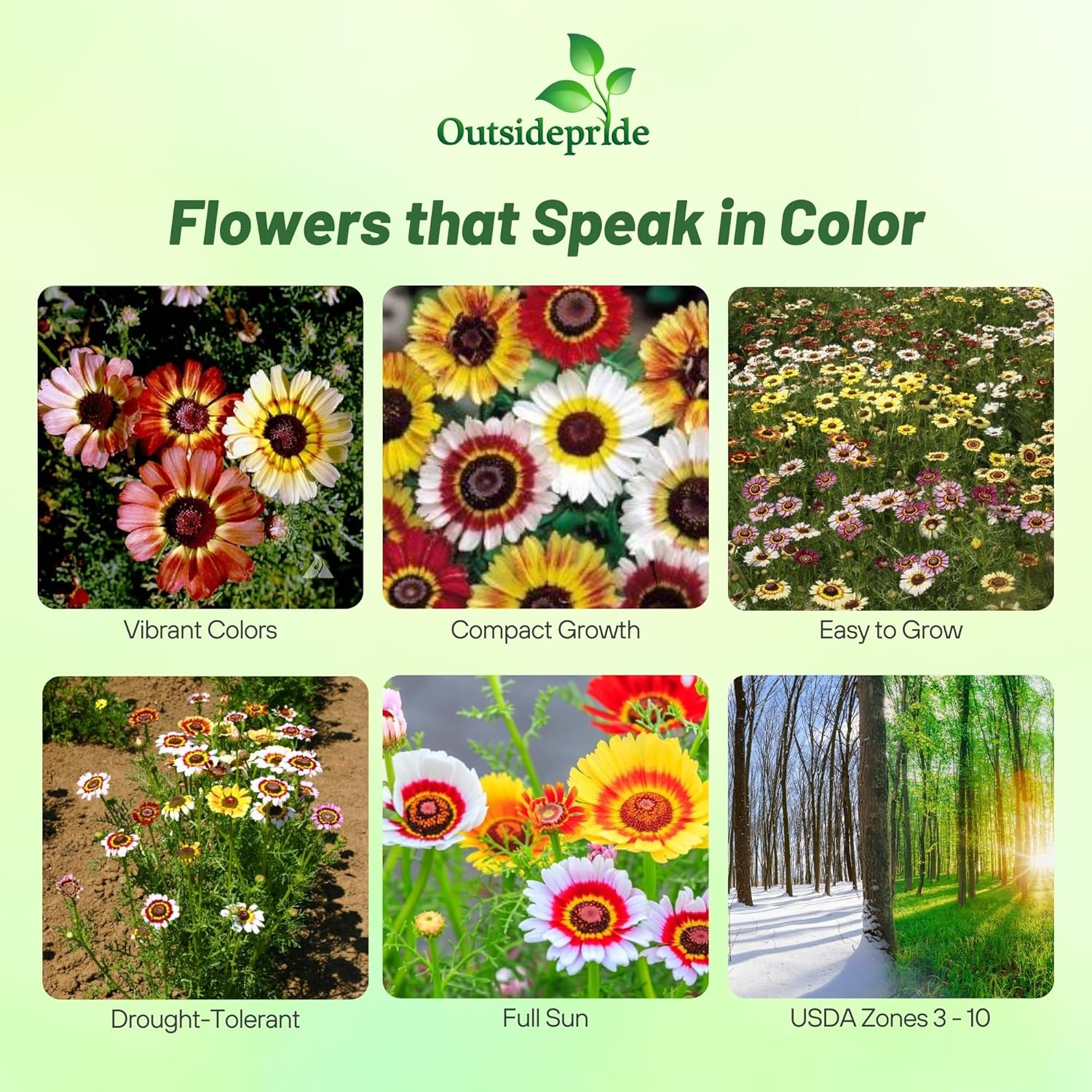
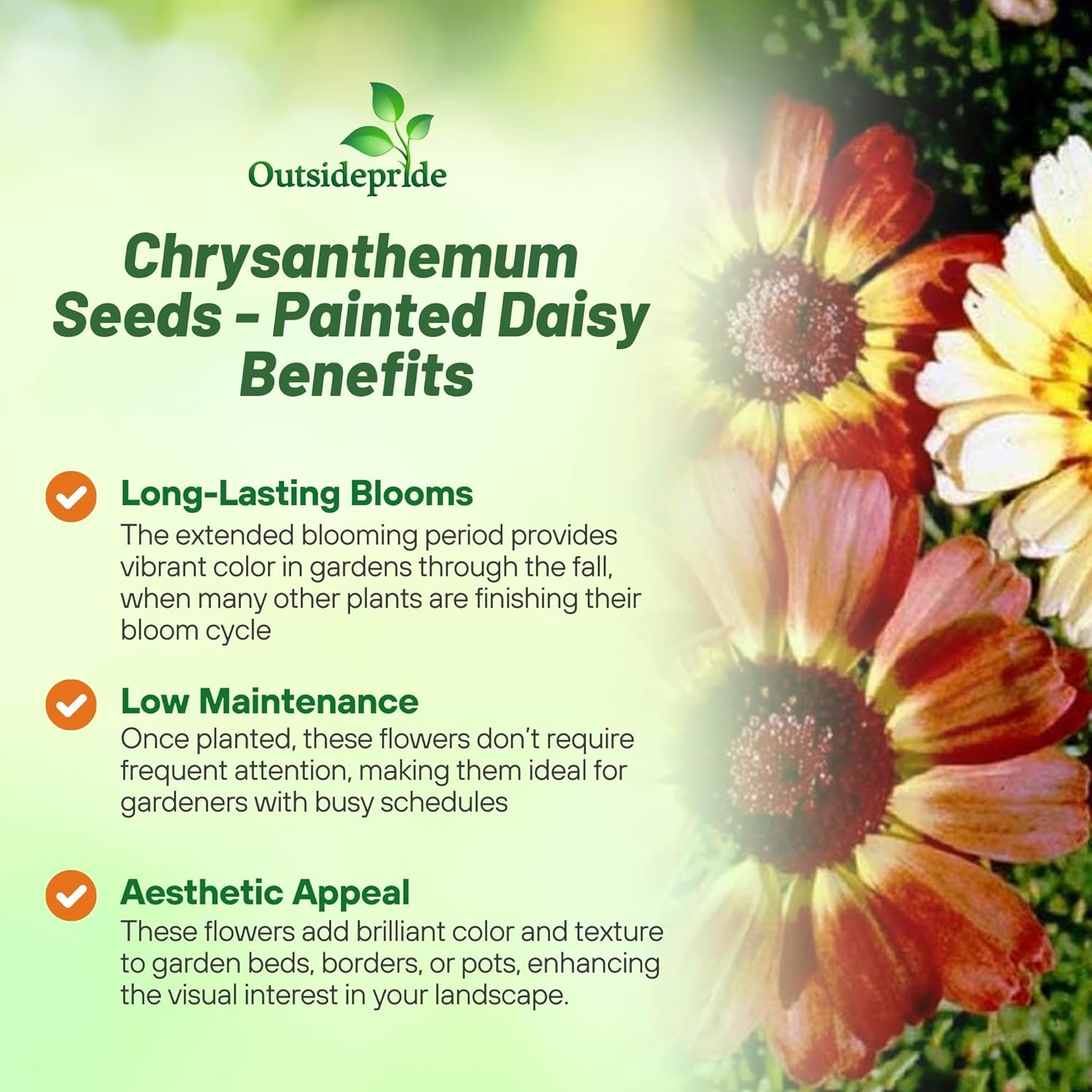
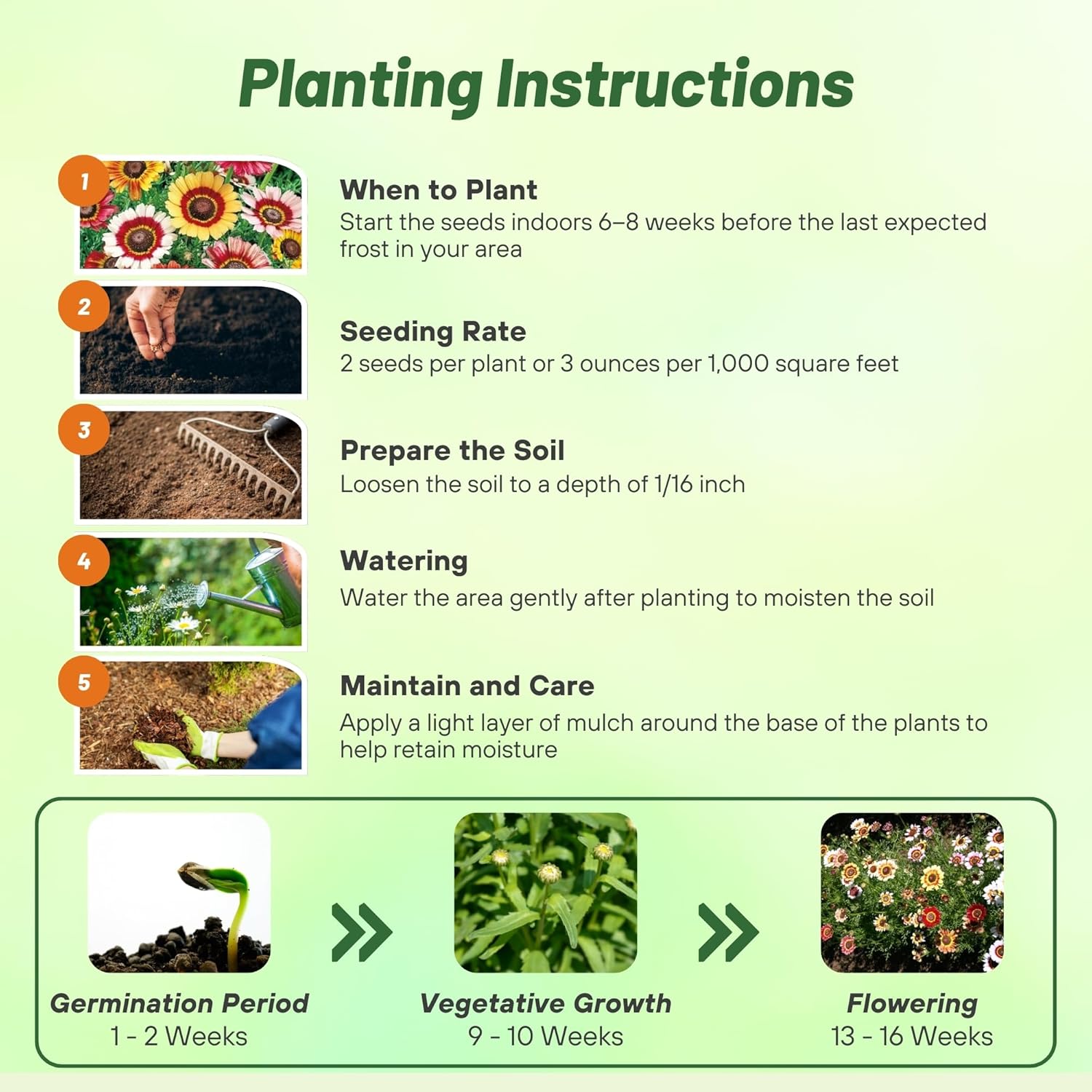
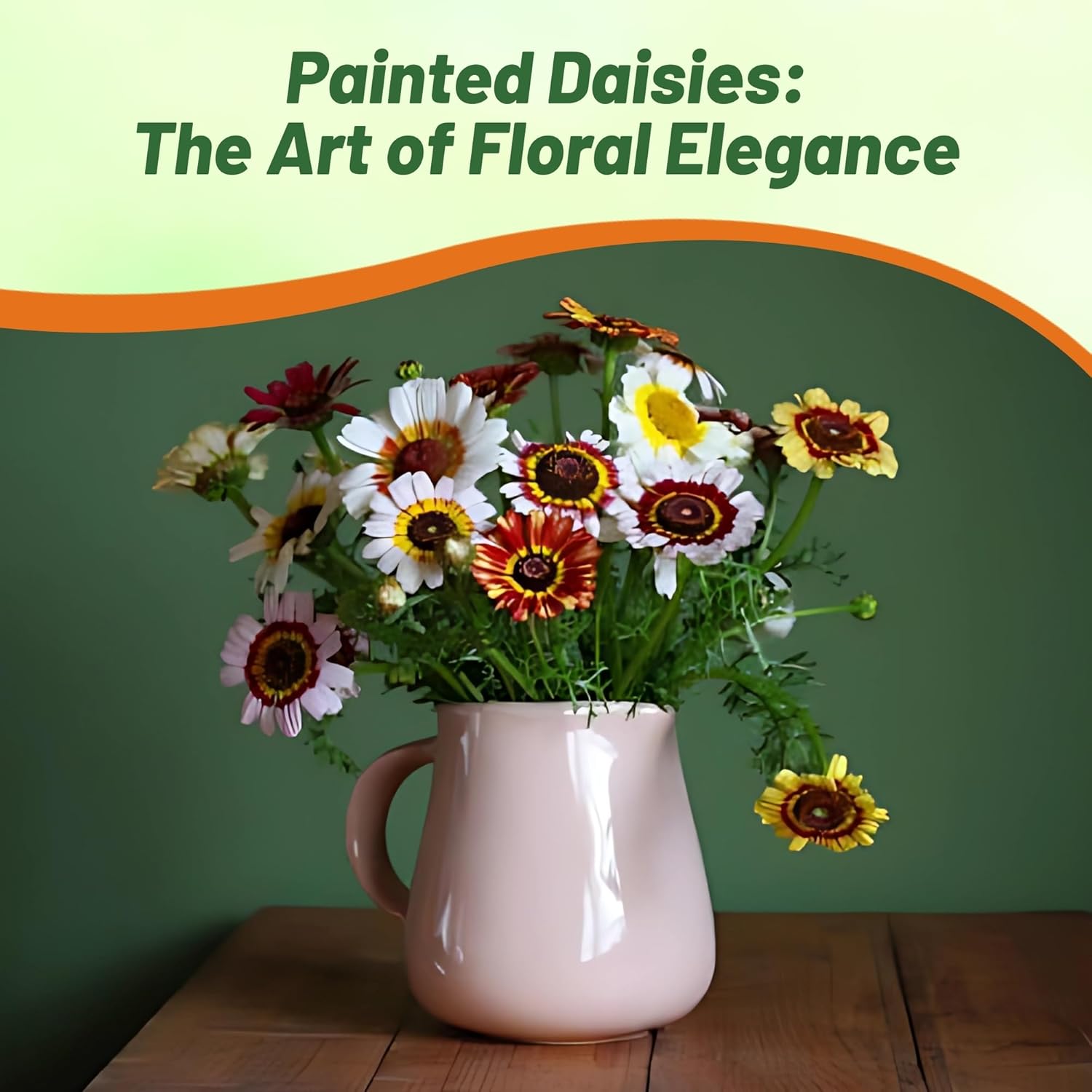

Chrysanthemum Seeds - Painted Daisy
SEASON
Annual
USDA ZONES
3 - 10
HEIGHT
18 - 36 inches
BLOOM SEASON
Summer and fall
BLOOM COLOR
Mix
ENVIRONMENT
Full sun
SOIL TYPE
Well-drained, pH 5.2 - 7.0
DEER RESISTANT
Yes
HOUSE PLANT
No
SEASON
Perennial
USDA ZONES
3 - 7
HEIGHT
18 inches
BLOOM SEASON
Summer
BLOOM COLOR
Mix
ENVIRONMENT
Full sun
SOIL TYPE
Well-drained, pH 5.8 - 6.8
DEER RESISTANT
Yes
HOUSE PLANT
No
SEEDS PER POUND
436,000
SEASON
Perennial
USDA ZONES
3 - 9
HEIGHT
32 inches
BLOOM SEASON
Summer
BLOOM COLOR
White
ENVIRONMENT
Full sun
SOIL TYPE
Well-drained, pH 5.8 - 7.2
DEER RESISTANT
Yes
HOUSE PLANT
No
SEEDS PER POUND
859,000
SEASON
Perennial
USDA ZONES
3 - 9
HEIGHT
24 inches
BLOOM SEASON
Summer and fall
BLOOM COLOR
White
ENVIRONMENT
Full sun
SOIL TYPE
Well-drained, pH 5.2 - 7.0
DEER RESISTANT
Yes
HOUSE PLANT
No
SEASON
Annual
USDA ZONES
3 - 10
HEIGHT
24 inches
BLOOM SEASON
Summer and fall
BLOOM COLOR
White and Yellow
ENVIRONMENT
Full sun
SOIL TYPE
Moist, well-drained, pH 5.5 to 7
DEER RESISTANT
Yes
HOUSE PLANT
No
SEASON
Perennial
USDA ZONES
3 - 7
HEIGHT
18 inches
BLOOM SEASON
Summer
BLOOM COLOR
Red
ENVIRONMENT
Full sun
SOIL TYPE
Well-drained, pH 5.8 - 6.8
DEER RESISTANT
Yes
HOUSE PLANT
No
SEASON
Annual
USDA ZONES
3 - 10
HEIGHT
12 - 18 inches
BLOOM SEASON
Summer
BLOOM COLOR
Mixed
ENVIRONMENT
Full sun
SOIL TYPE
Moist, well-drained, pH 5.5 to 7
DEER RESISTANT
Yes
HOUSE PLANT
No
SEASON
Annual
USDA ZONES
3 - 9
HEIGHT
6 - 12 inches
BLOOM SEASON
Spring through fall
BLOOM COLOR
White
ENVIRONMENT
Full sun to partial shade
SOIL TYPE
Well-drained, pH 6.1 - 7.8
DEER RESISTANT
Yes
HOUSE PLANT
No
About...
Chrysanthemum (Chrysanthemum Carinatum Painted Daisy) - Start these Chrysanthemum Carinatum seeds to have a lovely display of Painted Daisies all summer long! These Painted Daisy flowers have three inch beautiful white, yellow, red and purple blooms with varying bands of other colors with a purple center.MORE CHRYSANTHEMUM OPTIONS
Planting Directions
TEMPERATURE
68F
AVERAGE GERM TIME
14 - 28 days
LIGHT REQUIRED
Yes
DEPTH
1/16 inch
SOWING RATE
2 seeds per plant or 3 ounces per 1,000 square feet
MOISTURE
Keep moist until germination
PLANT SPACING
18 inches

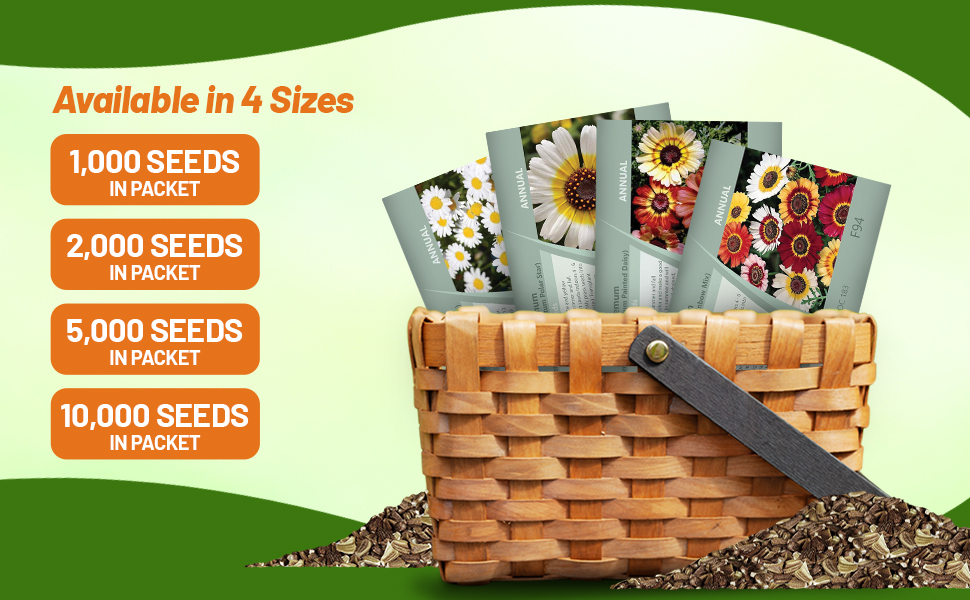
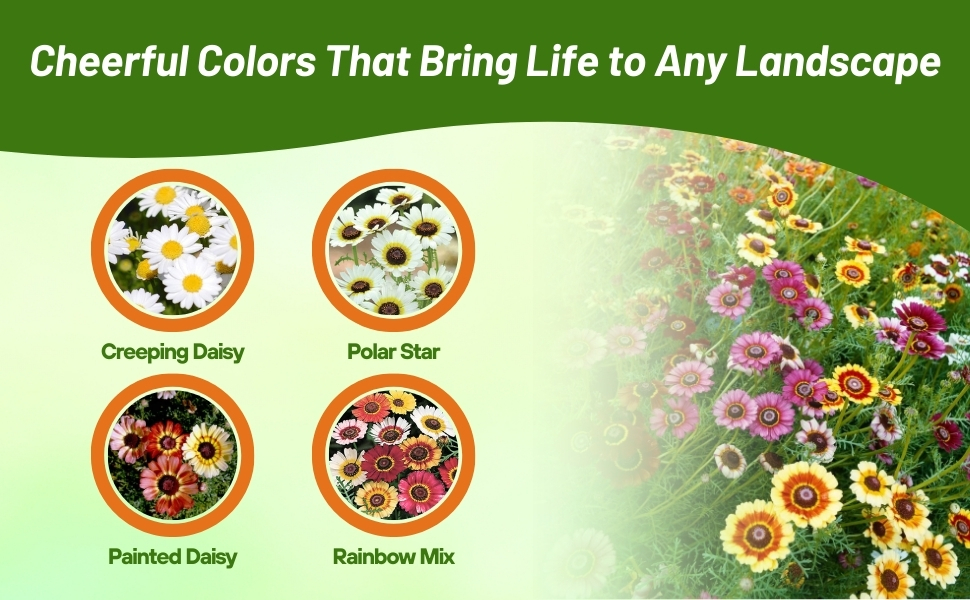
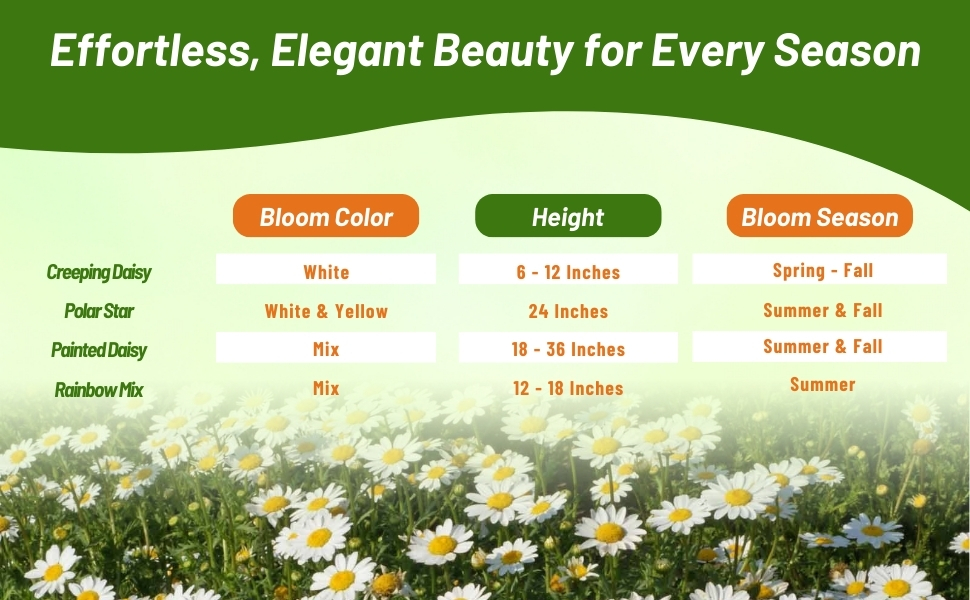

Chrysanthemum (Chrysanthemum Carinatum Painted Daisy) - Start these Chrysanthemum Carinatum seeds to have a lovely display of Painted Daisies all summer long! These Painted Daisy flowers have three inch beautiful white, yellow, red and purple blooms with varying bands of other colors with a purple center. This annual Chrysanthemum plant is an unforgettable flower that is easily grown from flower seeds. Painted Daisies are easy to care for and they will re-seed themselves giving the garden another display of Chrysanthemum Painted Daisy flowers the following year.
Painted Daisy flowers are a great choice for a quick, showy burst of color and also make a good long-lasting cut flower. Painted Daisy will begin blooming in summer and will continue well in to the fall months. Grow Chrysanthemum Carinatum plants in a rich, well-drained, evenly moist soil and in full sun. Good drainage during the winter is essential. Start the Chrysanthemum seeds directly outdoors in a prepared seedbed once frost season is over. Lightly cover the flower seeds with soil and keep the seeds moist until germination occurs. Pinch back young Painted Daisy plants to keep them bushy. Deadhead spent flowers regularly to encourage continued blooming. Approximately 11,800 seeds per ounce.
Common Questions
Can chrysanthemum be used for cut flowers?
Yes, they make great cut flowers. Be sure to check out our guide on Cut flower Gardens.
Do chrysanthemums attract pollinators?
Yes, butterflies are attracted to chrysanthemums.
Can I plant these in containers?
Annual varieties are typically compact and suitable for containers. Keep in mind that they may not bloom until later in the season, so pair them with plants that bloom in summer or relocate them to a more visible spot later on.
Do I have to pinch chrysanthemums?
By pinching mums when they reach around 6 inches tall until early July, you can encourage bushier plants with an abundance of blooms in the fall.
Why aren’t my chrysanthemums blooming?
Chrysanthemums wait to bloom until the days start getting shorter in late summer. They require full sun to bloom and may not flower if they have been over-fertilized with a high nitrogen fertilizer.
Why didn’t my painted daisies bloom?
Painted daisies bloom the second year after sowing the seed.
Planting Directions
TEMPERATURE
68F
AVERAGE GERM TIME
14 - 21 days
LIGHT REQUIRED
Yes
DEPTH
1/16 inch
SOWING RATE
2 seeds per plant
MOISTURE
Keep moist until germination
PLANT SPACING
18 inches
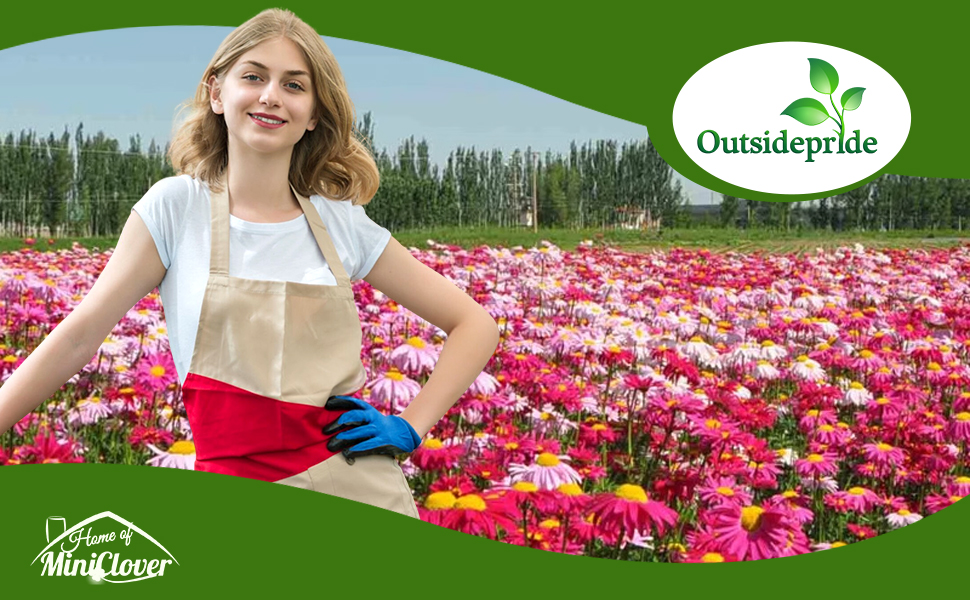
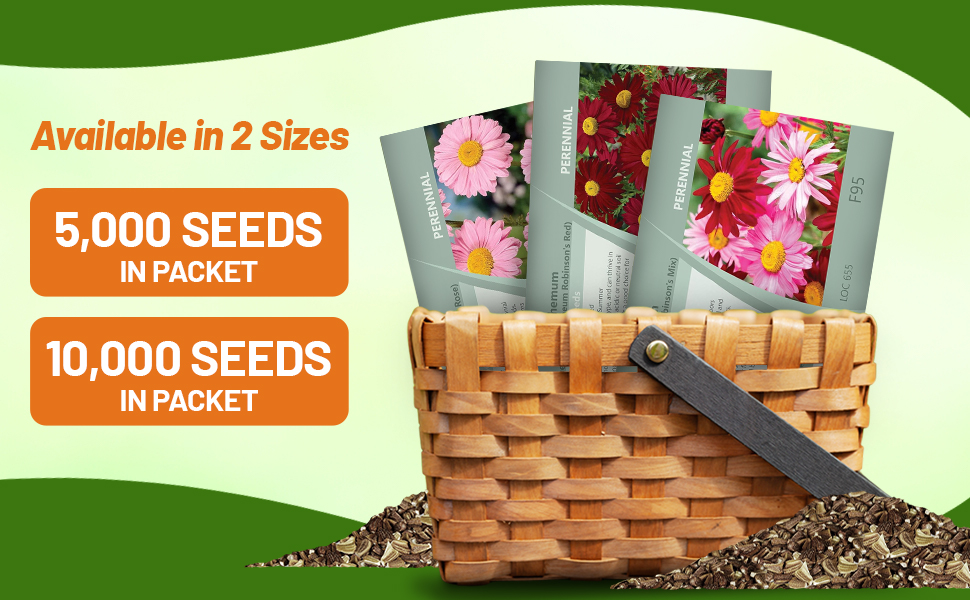
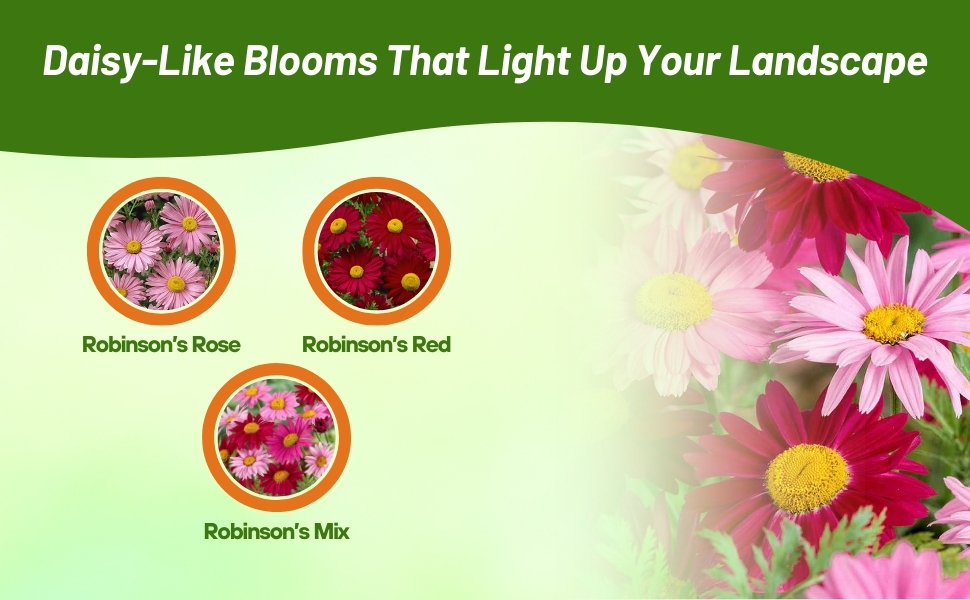

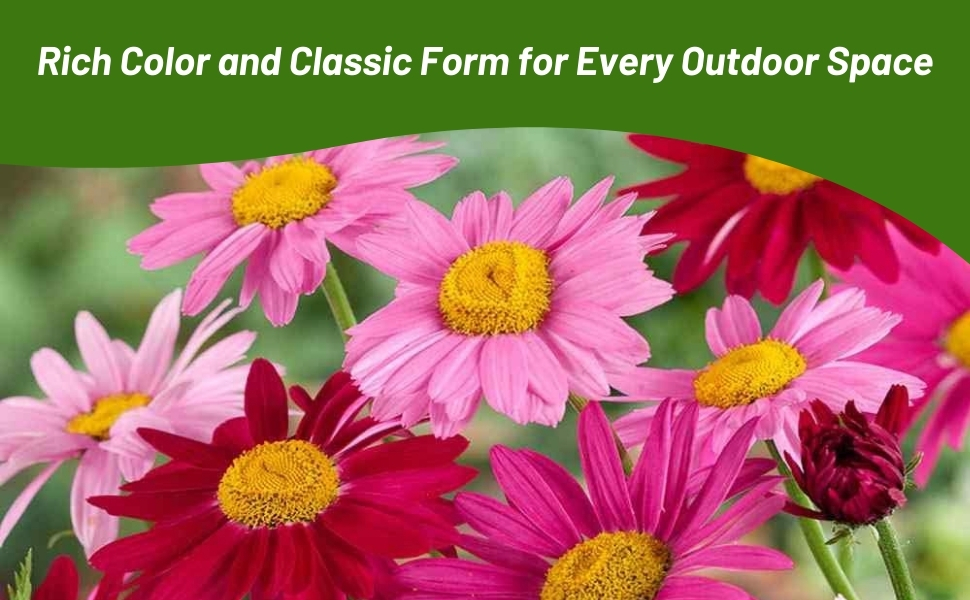
Chrysanthemum (Chrysanthemum Coccineum Robinson's Mix) - Chrysantheum Coccineum flower seed, also known as Painted Daisy, produces 2 - 3 inch daisy-like flowers in red, pink, lilac and white with a yellow center in late spring to early summer. The foliage has fern-like divided leaves with a strong scent and is attractive even when the blooms are gone. Chrysanthemum Coccineum plants prefer a fertile, well-drained soil and full sun in the North or partial shade in the South. Chrysanthemum Robinson's Mix attracts bees, butterflies and birds to the garden and makes a great cut flower as well. There are some names for Painted Daisy that are synonymous and can be confusing. Tanacetum coccineum and Pyrethrum coccineum can both be used in addition to Chrysanthemum coccineum.
Best in full sun, this perennial Chrysanthemum is not fussy about soil type, and Painted Daisy Robinson Mix can thrive in poor or average conditions, but prefers acidic or neutral soil to alkaline. Deer leave it alone, making it a good choice for an open meadow as well as the sunny border.
Sow Chrysanthemum seeds indoors before last frost to be transplanted outdoors when temperatures warm up. Press the flower seeds into the soil and lightly cover. Keep the Painted Daisy seeds moist until germination occurs. For warm climates with a long growing season, after danger of frost has passed, directly sow the flower seeds into prepared beds. Cut the stems down low after Painted Daisy flowers are done blooming to encourage and second bloom later in the summer.
Common Questions
Can chrysanthemum be used for cut flowers?
Yes, they make great cut flowers. Be sure to check out our guide on Cut flower Gardens.
Do chrysanthemums attract pollinators?
Yes, butterflies are attracted to chrysanthemums.
Can I plant these in containers?
Annual varieties are typically compact and suitable for containers. Keep in mind that they may not bloom until later in the season, so pair them with plants that bloom in summer or relocate them to a more visible spot later on.
Do I have to pinch chrysanthemums?
By pinching mums when they reach around 6 inches tall until early July, you can encourage bushier plants with an abundance of blooms in the fall.
Why aren’t my chrysanthemums blooming?
Chrysanthemums wait to bloom until the days start getting shorter in late summer. They require full sun to bloom and may not flower if they have been over-fertilized with a high nitrogen fertilizer.
Why didn’t my painted daisies bloom?
Painted daisies bloom the second year after sowing the seed.
Planting Directions
TEMPERATURE
70F
AVERAGE GERM TIME
15 - 30 days
LIGHT REQUIRED
Yes
DEPTH
1/16 inch
SOWING RATE
4 ounces per 1,000 square feet or 10 pounds per acre
MOISTURE
Keep moist until germination
PLANT SPACING
15 - 18 inches
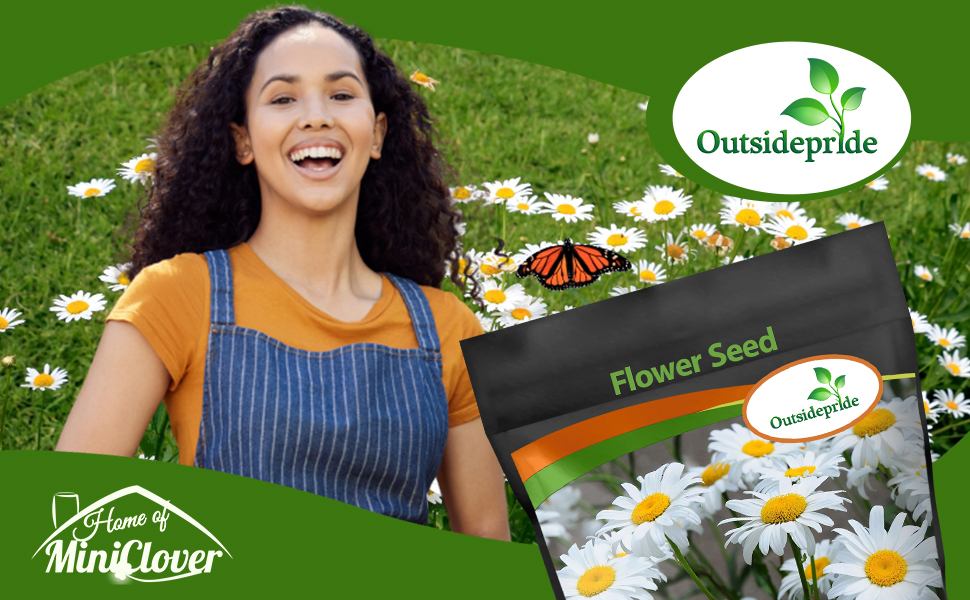
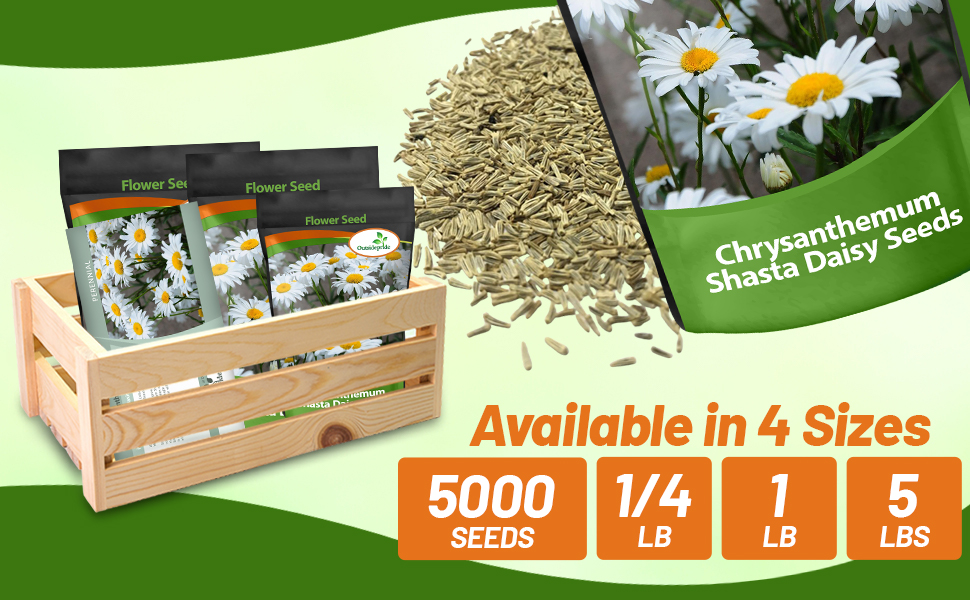
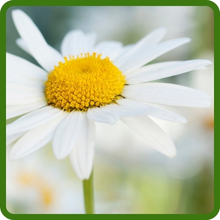
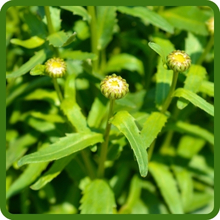
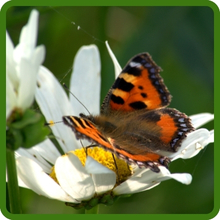

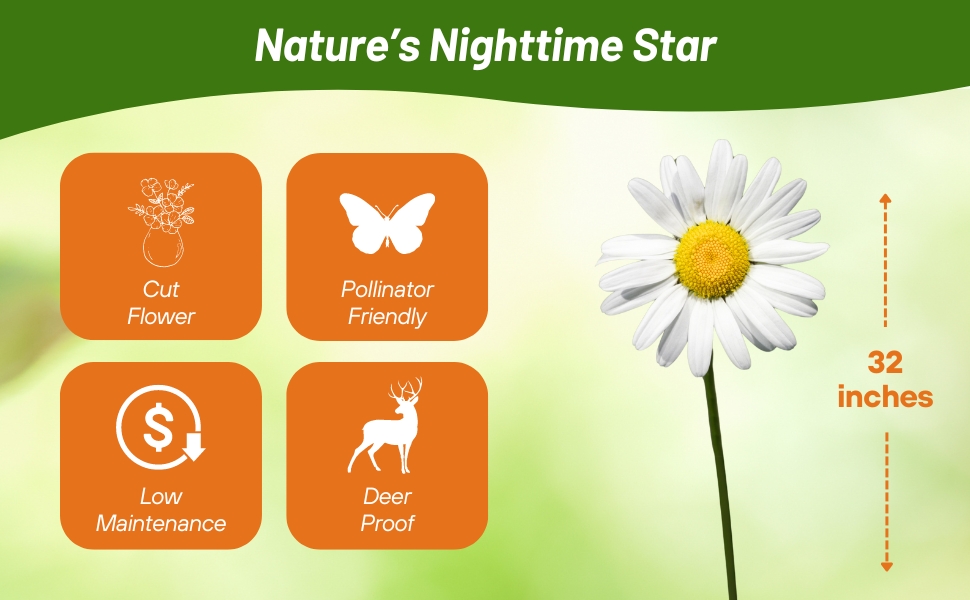
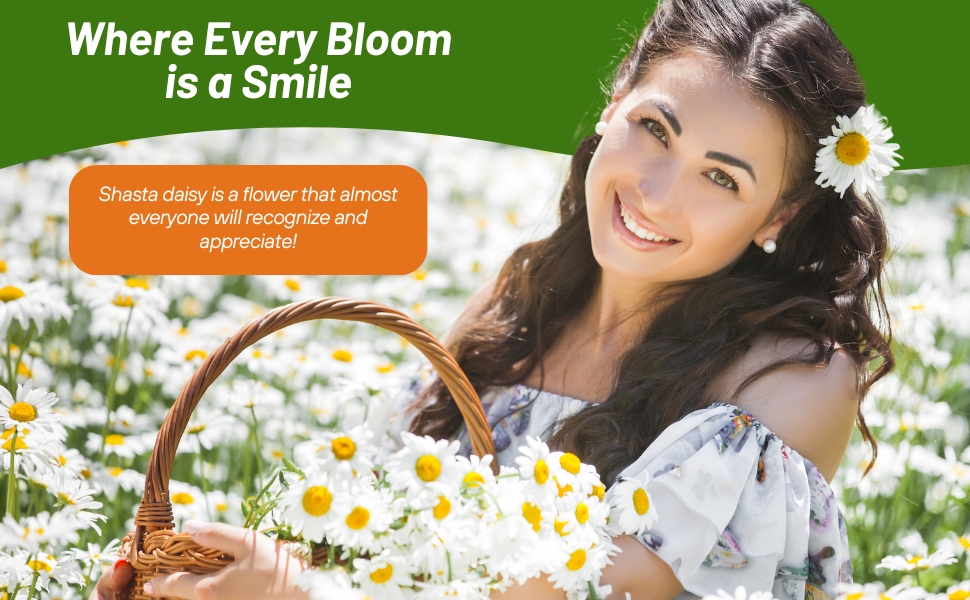
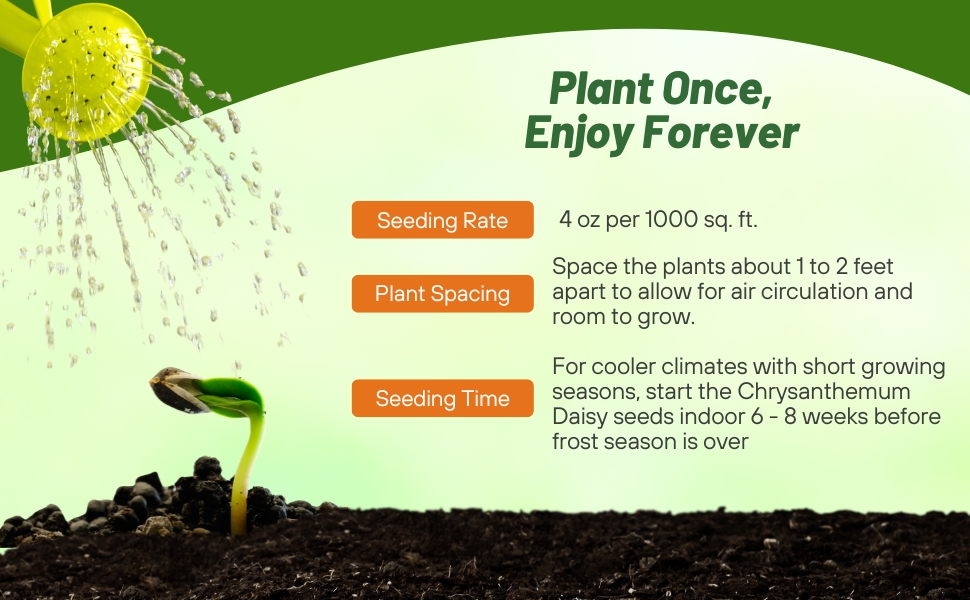
Chrysanthemum (Chrysanthemum Maximum Shasta Daisy) - Start Chrysanthemum seeds to grow this old-fashioned, drought tolerant favorite! Chrysanthemum Maximum Shasta Daisy is a mainstay in the perennial flower garden with its large white blooms and yellow centers. Shasta Daisy is a very popular wild flower that will grow in all regions of North America where water conservation or xeriscape landscaping is desired. Chrysanthemums are very easy to establish from flower seeds, and Shasta Daisy flowers are great for cutting and the butterflies love them. Chrysanthemum likes to grow in full sun and well-drained soils. To prolong the bloom pick off flowers as soon as they fade. To prevent overcrowding, divide Shasta Daisy plants after three or four years of flowering.
Shasta Daisy plants are ideal for a wild flower garden's edge or are attractive in butterfly gardens or combined with other perennials or annuals. For cooler climates with short growing seasons, start the Chrysanthemum Daisy seeds indoor 6 - 8 weeks before frost season is over. For warmer climates, sow the Shasta Daisy seeds directly outdoors into prepared beds in the spring after danger of frost has passed. Sow the wild flower seed on the surface and keep moist. Shasta Daisy flowers will not bloom the first year, but grow slowly to get established. It will then be a prolific bloomer in successive years. Shastas are one of the best daisies to grow from wild flower seed!
Common Questions
Can chrysanthemum be used for cut flowers?
Yes, they make great cut flowers. Be sure to check out our guide on Cut flower Gardens.
Do chrysanthemums attract pollinators?
Yes, butterflies are attracted to chrysanthemums.
Can I plant these in containers?
Annual varieties are typically compact and suitable for containers. Keep in mind that they may not bloom until later in the season, so pair them with plants that bloom in summer or relocate them to a more visible spot later on.
Do I have to pinch chrysanthemums?
By pinching mums when they reach around 6 inches tall until early July, you can encourage bushier plants with an abundance of blooms in the fall.
Why aren’t my chrysanthemums blooming?
Chrysanthemums wait to bloom until the days start getting shorter in late summer. They require full sun to bloom and may not flower if they have been over-fertilized with a high nitrogen fertilizer.
Why didn’t my painted daisies bloom?
Painted daisies bloom the second year after sowing the seed.
Planting Directions
TEMPERATURE
70F
AVERAGE GERM TIME
14 - 28 days
LIGHT REQUIRED
Yes
DEPTH
Do not cover the seed but tightly press into the soil
SOWING RATE
2 ounces per 1,000 square feet or 5 lbs per acre or 7 - 8 seeds per plant
MOISTURE
Keep moist until germination
PLANT SPACING
18 inches
Chrysanthemum (Chrysanthemum Leucanthemum Ox-eye Daisy) - To create a lovely meadow, sow Ox-Eye Daisy seeds directly outdoors. Known for its long bloom season, the Ox-eye Daisy is a well-known and popular flower. It readily establishes from Chrysanthemum Leucanthemum seeds and loves a sunny spot. Ox-eye Daisy makes a great cut flower as well.
The Chrysanthemum Leucanthemum Ox-Eye Daisy is is one of our love-hate wildflowers. Almost everyone loves them for the beautiful, long-lived flowers and it is established in all 50 states and in Canada; however, many states consider Oxeye a weed, so check to see if its allowed in your area. Common roadside daisies grow anywhere, including in wet spots, and form tough big root masses with large blooming clumps.
Sow Chrysanthemum flower seeds directly outdoors in the late fall. The cold winter temperatures actually help the flower seeds to germinate in the spring when the temperatures warm up. Pinch back young daisy plants to keep them bushy. Grow Chrysanthemum plants in a rich, well-drained, evenly moist soil and in full sun. Good drainage in winter is essential for Oxeye Daisies. Deadhead the spent flowers regularly. Tall plants may require staking. Purchase Ox-eye Daisy seeds in bulk to cover large meadows.































